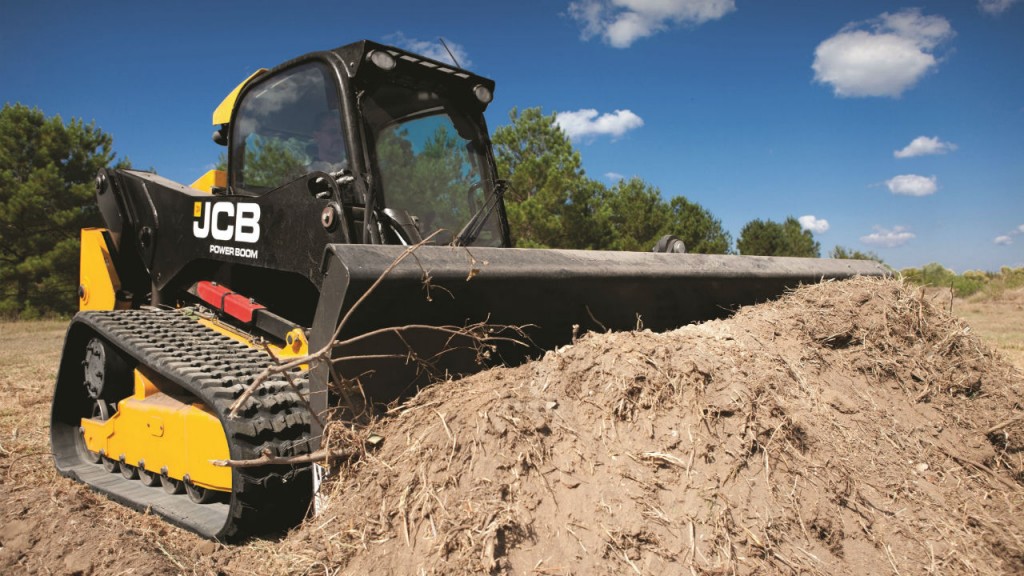Compact track loaders gaining big traction in the light equipment market

The compact track loader (CTL) is a relatively young upstart in the compact equipment business. After unremarkable impact on the market as recently as the nineties, leading manufacturers now agree that the CTL has surpassed the skid-steer loader as the compact, easy-to-transport jobsite workhorse that construction industry contractors are looking for. Contractors who desire equipment that can serve multiple functions find that the versatility of the CTL is very appealing for carrying, digging, dumping, or performing other high demand tasks, such as site-prep jobs, and can do it all on less than ideal ground conditions, such as uneven, muddy, or swampy terrain, and on slopes.
Due to the large CTL’s versatility to handle a variety of attachments while both traversing tricky terrain and fitting through narrower spaces, contractors have begun to purchase CTLs in place of skid-steer loaders, small wheel loaders, small dozers, backhoes and even telehandlers for loading and unloading tasks where high reach is unnecessary.
Get more done with one machine
According to Mike Mitchell, Product Specialist Construction Equipment at Kubota Canada, a large CTL with a rated operating capacity of 3,000 pounds or greater at 35 percent of tipping capacity is ideal for operating high-demand attachments that require hydraulic flow of 40 gpm and 3,500 psi of pressure. These attachments include augers, mulchers, heavy-duty rotary cutters, planers and more.
Like skid steers, CTLs offer scaled hydraulics options, including standard auxiliary and high-flow auxiliary, that a contractor can select to meet the needs of their attachments. An extended high-flow package may be required for running large mulchers and chippers/shredders. Attachments such as brush cutters are also a lot heavier than your standard bucket, so the capacity of a large track machine is more conducive to efficient operation.
CTLs are ideal for grading and trenching because there is less oscillation of the frame as the CTL traverses uneven or soft ground, says Brad Stemper, Solutions Marketing Manager, Case Construction Equipment. “Trencher attachments are perfect for use with CTLs,” he explains, “as the machine’s tracks provide less rutting and help achieve a more evenly dug trench. Dozer blades work well with CTLs because the undercarriage is similar to a dozer and it provides similar pushing power – all while moving more evenly across the working plane than a skid steer would.”
A market on the rise
George Chaney, SSL/CTL International Sales Manager, JCB, says that the skid-steer market is in decline, and while there will always be a market for wheeled machines, contractors are seeing the value in the added versatility of the tracked machine. “There was a contractor who initially told me a few years back that he would never buy a tracked machine because of the upfront costs and he was apprehensive of the maintenance costs – wanting to know how long the tracks would last and how much they and the undercarriage components would cost to replace versus a wheeled machine. But when contractors see the benefit of the productivity, being able to lift more and be more stable on inclines where the wheeled machine couldn’t, they begin to realize the benefit of the tracked machine.”
Gregg Zupancic, Product Marketing Manager at John Deere Construction & Forestry, says that finances are driving the surge in CTL sales. As bigger construction equipment has gotten higher in price during the last five or so years, because of the Tier 4 engine emissions technology, contractors are starting looking for more economical ways to get the job done.
Selecting from a range of models
Many OEMs offer a range of CTLs and there are many factors that go into picking the right one for a business’s needs. Gregg Zupancic at John Deere says that horsepower isn’t necessarily the first thing to consider when selecting a CTL. He recommends looking at CTL size and the access dimensions of a typical jobsite. Width of the machine is important, and to get the most value out of a CTL purchase, that machine needs to fit the jobsites it’s intended for – especially if it’s replacing other types of equipment in a fleet.
George Chaney at JCB, however, suggests starting with the vertical or radial lift decision, and then consider what the machine’s heaviest loads will be when selecting from a line of models. Adequate hinge-pin height is also essential for loading operations. Both then recommend looking at what attachments you run, and what attachments you want to run in the future. This is where hydraulic capacity is key and some of the smaller track loaders don’t provide enough horsepower or hydraulic power to be able to run these high-capacity attachments.
Kevin Coleman, Senior Marketing Engineer at Caterpillar, recommends that customers inquire about solutions to provide additional protection for certain components, as well as to assist in minimizing debris accumulation, if the machine will be utilized for land clearing.

